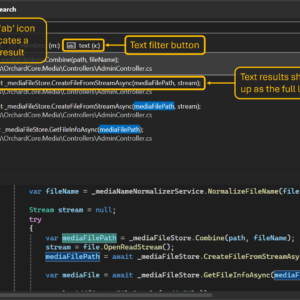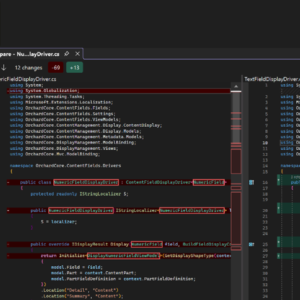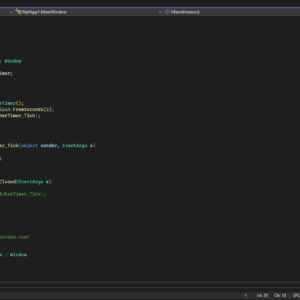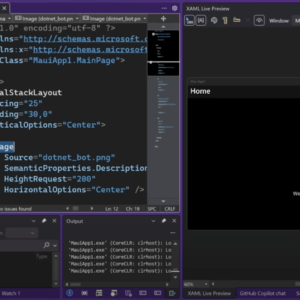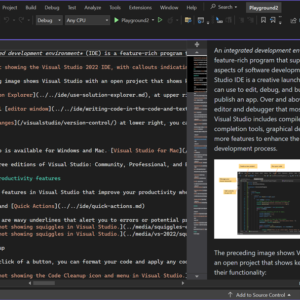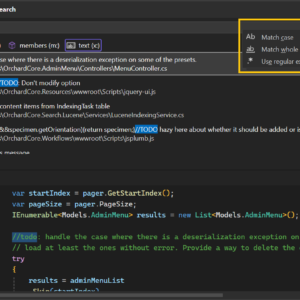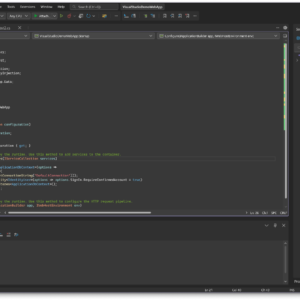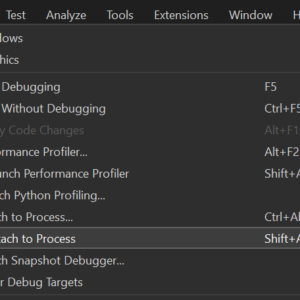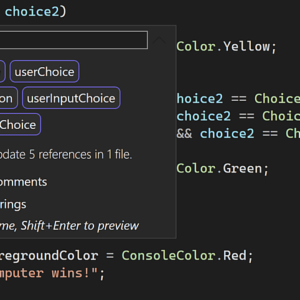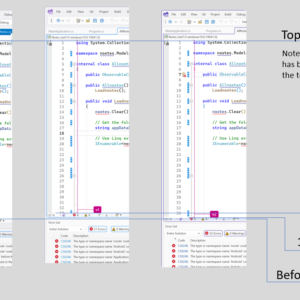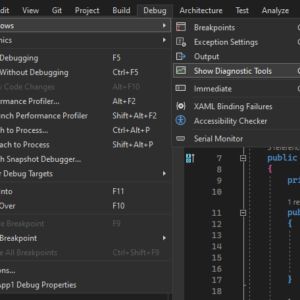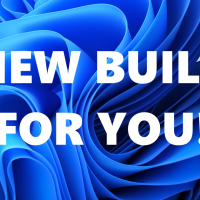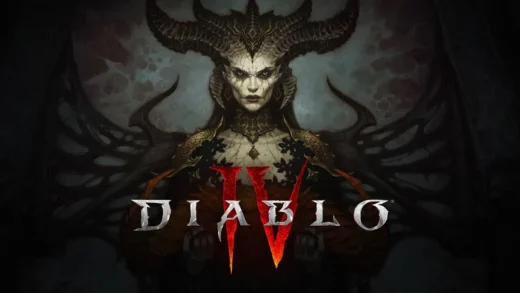![]() Hello everyone, welcome to our Visual Studio 2022 beginner’s guide that will take you through the essentials of using this powerful integrated development environment (IDE). Whether you’re new to programming or looking to switch to Visual Studio from another tool, this guide is designed to provide you with a solid foundation. We’ll cover everything from setting up your Visual Studio environment to exploring its most useful features, such as the code editor, debugger, and version control integrations. By the end of this guide, you’ll have a good grasp of how to navigate Visual Studio 2022 and start working on your own projects with confidence.
Hello everyone, welcome to our Visual Studio 2022 beginner’s guide that will take you through the essentials of using this powerful integrated development environment (IDE). Whether you’re new to programming or looking to switch to Visual Studio from another tool, this guide is designed to provide you with a solid foundation. We’ll cover everything from setting up your Visual Studio environment to exploring its most useful features, such as the code editor, debugger, and version control integrations. By the end of this guide, you’ll have a good grasp of how to navigate Visual Studio 2022 and start working on your own projects with confidence.
What is Visual Studio 2022?
Visual Studio 2022 is the latest iteration of Microsoft’s flagship integrated development environment (IDE), designed to provide developers with a comprehensive set of tools for software development. It’s a powerhouse of an IDE that supports a wide array of programming languages, including but not limited to C#, PHP, VB.NET, C++, and JavaScript, making it a versatile choice for developers working across different platforms and technologies. Visual Studio 2022 aims to improve upon its predecessors by offering enhanced performance, better usability, and more powerful features to support modern software development needs, including cloud, mobile, and game development. It introduces a more intuitive interface, advanced debugging tools, and AI-assisted code recommendations through IntelliCode, which helps speed up the coding process by predicting the most likely next line of code.
Visual Studio 2022 integrates AI through GitHub Copilot, an AI-powered coding assistant that enhances the development experience by offering real-time suggestions and code completions. This integration allows developers to write code more efficiently and effectively, as Copilot suggests entire lines or blocks of code based on the context of the work being done. It’s like having a programmer assistant who instantly provides insights and helps debug or write new code, leveraging the vast knowledge base of GitHub’s repositories. To me, this is by far my favorite feature, by far and I know a lot of you might not really like Ai helping you with everything, trust me, I get the argument on both sides lol.
Visual Studio 2022 Features:
- 64-bit application support: Allows for better performance and more memory, which is particularly beneficial for handling large projects.
- Hot Reload for .NET and C++ applications: Enables developers to modify their code and see the changes in real time without needing to restart the application.
- AI-powered code completions with GitHub Copilot: Offers real-time code suggestions and completions, accelerating the coding process.
- Advanced debugging tools: Features like IntelliTrace, Snapshot Debugger, and Time Travel Debugging (TTD) make it easier to diagnose and fix issues.
- Enhanced Git tooling: Simplifies version control with a more intuitive UI for Git operations within the IDE.
- Cross-platform development support: Facilitates building applications for Windows, Linux, macOS, mobile (iOS and Android), web, and cloud.
- Live Share: Allows real-time collaboration with team members, including shared editing and debugging.
- Improved Code Editor: Offers features like IntelliCode, which uses machine learning to provide AI-assisted IntelliSense (code completions), and CodeLens, which provides insights directly in the editor.
- Integrated development for Azure: Streamlines building, testing, deploying, and managing cloud applications directly from the IDE.
- Multi-language support: Supports a wide range of programming languages, including but not limited to C#, C++, VB.NET, JavaScript, Python, and more.
- Accessibility improvements: Includes features like enhanced screen reader support, high contrast themes, and improved keyboard navigation to make the IDE more accessible to all developers.
- Container and Kubernetes tooling: Offers integrated Docker container support and Kubernetes development tools, simplifying containerized application development.
- Visual Studio Marketplace: Provides access to thousands of extensions to customize and extend the IDE functionality.
Where to download Visual Studio 2022
As mentioned below, Visual Studio 2022 comes with 3 different versions to choose from, you can choose which one to download from our dedicated page below.
Visual Studio Editions Overview
Microsoft Visual Studio is available in three distinct editions:
- Community Edition: Launched in 2014, the Community edition is free and offers features comparable to the Professional edition, catering primarily to individual developers. It supports the development of various applications, including .Net and web applications. However, there are usage restrictions for larger enterprise organizations, specifically those with over 250 PCs or more than $1 million in annual revenue, where its use is not permitted. Non-enterprise organizations can have up to five users. The Community edition is designed to support a wide array of programming languages and provides access to a vast ecosystem of extensions.
- Professional Edition: This commercial version of Visual Studio, available since Visual Studio 2010, is tailored for professional use, offering advanced tools for building applications of any type. It supports XML and XSLT editing, integrates with Microsoft SQL Server, and includes Server Explorer among its features. Microsoft offers a free trial, after which a purchase is necessary to continue usage. The Professional edition focuses on enhancing developer flexibility, productivity, and collaboration, and includes additional subscriber benefits like access to Microsoft software, Azure, Pluralsight, and more.
- Enterprise Edition: Designed for teams of any size with high demands for quality and scalability, the Enterprise edition provides an integrated solution for end-to-end software development. A 90-day free trial is available, after which users must subscribe to continue access. This edition is ideal for projects requiring high scalability and aims to deliver software of the highest quality.
Creating your first project in Visual Studio
Step 1: Launch Visual Studio
- Start Visual Studio. Upon launching, you’ll be greeted with a start window.
- If it’s your first time, you might need to sign in with a Microsoft account and customize your development environment settings (theme, development settings, etc.).
Step 2: Create a New Project
- Click on the “Create a new project” option. This will open a new window where you can choose the type of project you want to create.
- In the search box, type “C#” to filter the project templates to those related to C#.
Step 3: Choose the Project Template
- From the list of project templates, select “Console App (.NET Core)” for a C# console application. This template is ideal for creating a simple command-line application that runs on .NET Core.
- Click “Next” to proceed.
Step 4: Configure Your Project
- Enter a name for your project in the “Project name” field. This can be anything, but for this guide, you might name it “HelloWorld”.
- Choose a location to save your project by clicking on the “Browse” button and selecting a directory.
- You can leave the “Solution name” as is, which by default matches your project name.
- Ensure the correct framework is selected, preferably the latest .NET version available.
- Click “Create” to generate your project.
Step 5: Explore the Project Structure
- Once your project is created, Visual Studio will open the main code file, typically named
Program.cs. This file contains a basic template code to get you started. - The Solution Explorer on the side shows the structure of your project, including references, dependencies, and other files.
Step 6: Write the “Hello World” Code
- In the
Program.csfile, locate theMainmethod. This method is the entry point of your application. - Inside the
Mainmethod, add the following line of code:Console.WriteLine("Hello World!");
- This line of code outputs the text “Hello World!” to the console when the application runs.
Step 7: Run Your Application
- Press F5 to build and run your application in debug mode. Alternatively, you can click the green play button in the toolbar, labeled “Start Debugging”.
- A console window should open displaying the text “Hello World!”. This indicates your program has run successfully.
Step 8: Experiment and Explore
- Now that you’ve successfully created and run your first project, experiment by changing the text within
Console.WriteLine()to see different outputs. - Explore the Visual Studio IDE further by adding more code, learning about debugging, or adding new files to your project.
Step 9: Save and Close
- Save your project by clicking “File” > “Save All”.
- You can close Visual Studio or continue working on your project or start a new one.
This is just to get you started, we will include more in depth articles and more complex projects for you to try so stay tuned.
Visual Studio 2022 Screenshots
Visual Studio 2022 Video
Recommended Visual Studio 2022 Books:
- Getting Started with Visual Studio 2022: Learning and Implementing New Features 2nd ed. Edition
- Hands-On Visual Studio 2022: A developer’s guide to exploring new features and best practices in VS2022 for maximum productivity
Visual Studio 2022 Resources:
I also happen to have a couple of my favorite Visual Studio Extensions that add new features, code and options to your VS 2022 installation by simply clicking install, yes, it’s that easy. Below are just a few of my favorites that I am using right now. You can get tons more extensions at the Visual Studio Marketplace.
Discover more from Windows Mode
Subscribe to get the latest posts sent to your email.
